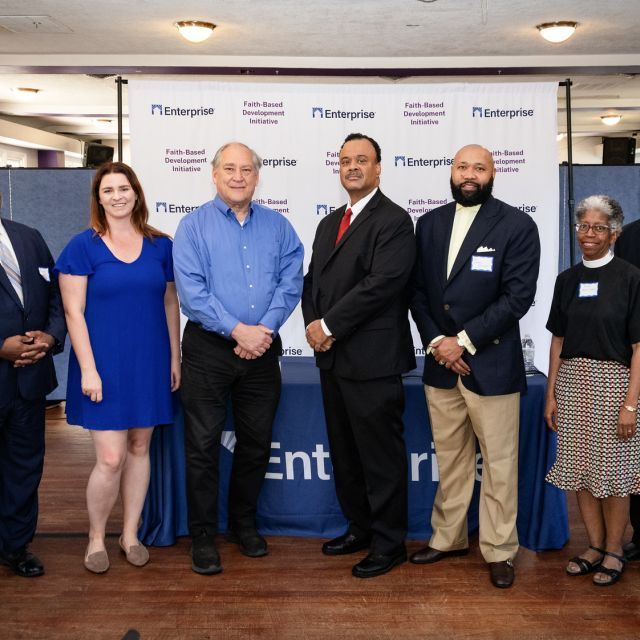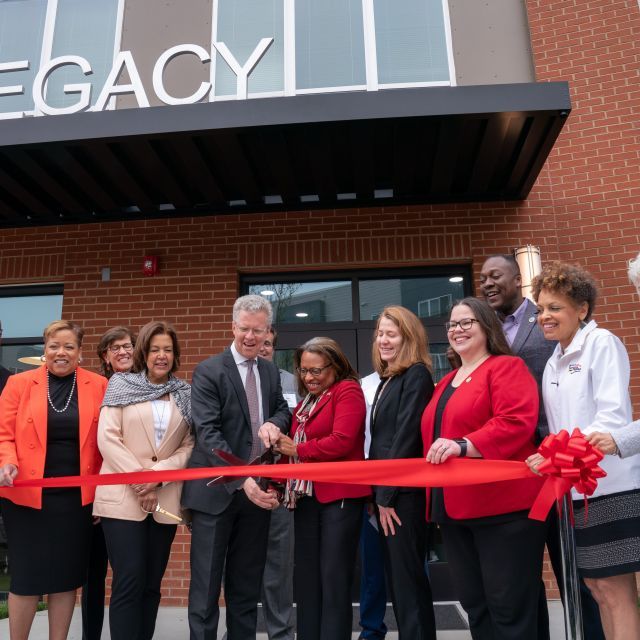From Alaska to Florida, Native and Tribal communities want to harness the power of renewables to become energy independent, build climate resilience, and provide residents with cleaner, cheaper, and more reliable energy. Many hope to tap into record amounts of new federal funds for large-scale green energy projects, drawing on their legacy of resilience, land stewardship, and self-determination.
Recent laws such as the America Rescue Plan, the Bipartisan Infrastructure Law, and the Inflation Reduction Act (IRA) include allocations specifically for Tribal and Native communities. The IRA provides more than $720 million to support Tribal communities as they transition to renewable energy and become more climate resilient. This includes rebates for high-efficiency electric homes; loans for developing clean energy projects such as solar and wind; financial and technical assistance in renewable energy; and pollution reduction grants.
Because Tribes are sovereign entities and their tax and legal structures differ from state and local governments, the IRA includes provisions such as direct pay in lieu of traditional tax incentives and credits.

“The federal government is making calibrations to be more supportive and including very nuanced things like the Tribal direct pay provision,” said Brett Isaac, a member of the Navajo Nation and founder and executive chairman of Navajo Power, which helps develop clean energy solutions for Tribal partners. “There are a lot of allies and people who want to see this money deployed, so they are really open to working with the Tribes.”
Any federal programming must address Tribes’ unique circumstances, said Jamal Lewis, director of Implementation, Learning, and Integration at Rewiring America, a nonprofit focused on electrifying homes, business, and communities.
“There is always a risk of a program being developed without Tribal input, or programs being developed where the funding gets depleted faster than it takes for Tribes to learn about it,” said Lewis, co-author of a report on the IRA and Tribal and Indigenous communities.
And that input is critical, according to Tonya Plummer, Enterprise’s director of Native American Housing Programs, explaining that Tribal communities possess in-depth knowledge about the land they have stewarded for generations. “Native people are indigenous to this land. As a Plains Indian, I was taught that the blood of our ancestors is in this dirt. We feel its heartbeat. So there’s a much deeper connection to nature and how we live in harmony with this land,” said Plummer.
Tribal Nations must be at the forefront of determining how to foster a more resilient future through decarbonization. “The number one thing is to center the Tribes as thought and implementation leaders over their own land, and to really uphold their sovereignty and self-determination,” said Plummer, an enrolled Tribal citizen of Assiniboine, Dakota, and Cree heritage.
A White House executive order signed last December acknowledged the legacy of damage that federal policies of the past have inflicted on Tribal communities, including stolen land and resources. The order affirms that “Tribal self-governance is about the fundamental right of a people to determine their own destiny and to prosper and flourish on their own terms.” The order requires federal agencies to ensure funding designated for Tribal communities is “accessible, flexible, and equitable.” It also created a “one-stop-shop” or clearinghouse for federal funding available to Tribes.
Acting on Tribal Feedback
The federal government has been incorporating feedback from Tribal consultations into IRA rules and guidance. For example, allocations specifically for Indian lands and the Alaska Native Corporation were created to avoid having them compete against better-resourced entities, a Treasury Department official said.
Another example is flexibility regarding joint ownership. Recognizing that centuries-long systemic barriers have curtailed the ability of some Tribes to finance and own large utility projects, the Treasury and the IRS permitted joint arrangements, so Tribes can partner with non-Tribal entities and still get their credit portion.
Tribal lands account for more than 6% of the country’s renewable energy potential, according to the National Renewable Energy Laboratory. But a lot of promise remains untapped – 21% of homes in Navajo Nation and 35% of Hopi Indian Tribe homes lack electricity.
Many Tribal communities pay higher-than-average income portions toward energy bills, face steeper electricity rates, and experience more outages than residents of non-Tribal areas, according to a Department of Energy report. The report also pointed out that climate change makes American Indian and Alaska Native communities increasingly vulnerable; many have already been forced to relocate. A lot of the communities are eager to switch to renewable energy – a 2019 review of 35 Tribal strategic energy plans found 32 were exploring solar options.
“Tribes must have a voice in how to foster a more resilient future for the generations coming,” Plummer said. “They should get to choose what that looks like. Whether it’s solar or wind energy, each Nation and region has different challenges they’re working through.”
Multi-million Dollar Solar Power
In Alaska, for example, a multi-million dollar solar and battery storage program aims to help Tribal communities largely inaccessible by road access clean and reliable energy. The Northern Cheyenne Tribe is developing a community solar project across its Montana reservation to serve everyone from Tribal elders to the local Head Start facility. In California, the Karuk Tribe is turning to solar power to reduce dependence on the traditional grid system.
Tribes have different structures and economies, so they bring unique strengths in the shift toward green energy. At the same time, they often confront competing priorities as they address everything from housing and water infrastructure to energy and economic development.
“They are often doing multiple jobs and don’t have the time necessary to understand which programs they may be eligible for,” said Mark Haggerty, senior fellow on the Energy and Environment team at the Center for American Progress (CAP) and author of a report on how rural and Tribal communities can take advantage of capital investments.
Nonprofits have stepped up to help Indigenous communities apply for unprecedented federal resources, but often lack expertise in areas such as financing and tax law, said Wendolyn Holland, senior advisor for Policy and Tax at the Alliance for Tribal Clean Energy, a nonprofit that provides capacity-building for Tribes. “Crafting project finance for utility-scale renewables is no small feat,” said Holland, “and the presence of predatory developers exacerbates the situation, exploiting the gaps and vulnerabilities in the system for their own gain.”
Cautious Optimism
Some Tribal communities have been battling health and environmental problems after decades of oil, gas, and coal production, and uranium mining. They want to ensure new initiatives do not negatively impact residents, animals, plants, and land and water resources, said Navajo Power’s Isaac.
Energy is also intertwined with sovereignty and independence. And new federal dollars mark an opportunity to shift the power dynamic and center Tribal communities to take the lead.
“It’s the first time we’re in the driving seat of an industry – when we build these things, we have a lot more investment and participation, and we’re more optimistic about how to use these opportunities to leverage the economic benefits,” he said. “We’re getting more savvy about how to do that and are excited about creating new industries – being able to prioritize workforce development for new types of jobs that have long-lasting impact.”
Plummer is also hopeful about the possibilities ahead. “As the clean energy revolution rolls out alongside meaningful implementation of the executive order and more readily available resources, it will be exciting to see Tribes harness the power of their sovereignty and our natural resources to build a sustainable future for future generations,” she said.
Vesna Jaksic Lowe has written for the New York Times, the Washington Post, and the New York Daily News. This is the fifth in a series of articles exploring how the affordable housing sector can maximize the potential of the IRA. Read more from the series: How Decarbonization Can Build a More Equitable Workforce, How State Finance Agencies Are Gearing Up for the IRA, How the IRA will Help Solar Gardens Power Affordable Housing, From Roadmaps to Software: Tools to Help Leverage the IRA.


